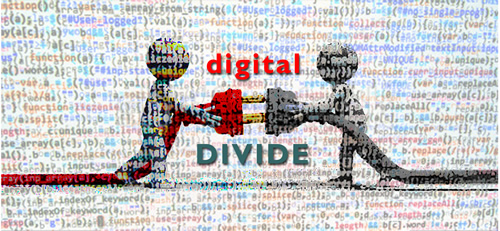Preparing for the unexpected is easier said than done – especially when it comes to education. Long-term school closures caused by a global pandemic were certainly not at the top of educators’ priority lists at this time last year. While administrators have gone above and beyond to address students’, parents’ and teachers’ needs when schools shifted to remote learning, it has become clear that districts were not prepared to deliver solutions that would ensure every student could embrace remote and online learning.
Related content: When the digital divide is made worse by a pandemic
Despite many efforts to close the digital divide, not all students have equal access to the proper devices and connectivity needed to continue their education. It was not truly appreciated how extensive this problem was until students were immediately required to connect to the classroom online from their homes with little-to-no notice.
According to the Alliance for Excellent Education’s Future Ready Schools initiative, 16.9 million U.S. students lack home internet access and simply could not continue with their learning. The need to address this inequality has a new urgency.
Through my work, I have a unique vantage point into the education community’s connectivity challenges. While the critical need for access and equity cannot be understated, the work that educators are doing to address the issue, and the creative approaches they are taking, provide us with a sense of optimism that the right steps are being taken to ensure no student is deprived of their education.
Turning uncertainty into strategy
When schools began closing in March, administrators quickly moved classes online and looked for opportunities to repurpose their existing assets to support students, such as equipping school buses with WiFi and parking them in selected neighborhoods to provide critical internet access to students who lacked it. Districts were keen to make immediate use of what they already had on hand. The ability to provide options so quickly demonstrated how committed administrators and educators were to providing high-speed internet access to their students.
A new definition of preparedness
In the past, when administrators prepared for disasters, they were typically thinking of short-term weather-related challenges – such as blizzards or hurricanes that would close a district (or even an individual school) for a short time. The shortcomings of that level of preparation became evident when whole districts were forced to close for months, not days. As a result, school preparedness is now defined as the ability to teach and learn online at a moment’s notice, and for an extended period. The solutions needed to achieve this level of preparedness require resources and investments that administrators have heretofore been unprepared to deliver.
Beyond purchasing the equipment and software that enables remote and hybrid learning, preparation is also extending to the classroom. Educators were forced to adapt how they teach and engage students for the fall semester, recognizing that classrooms would be more video conferences than in-person teaching.
This change shifted the focus and required adjustments to their established curriculum and processes. Teachers had to grapple with replicating an engaging classroom online and understand where it could complement in-person instruction, all while changing their lesson plans to be partially student-driven and partially hands-on learning. Ultimately, these shifts will create more resilient learners prepared to adjust as needed with the resources necessary to maintain their education regardless of the obstacles thrown their way.
Awareness and action are improving
The digital divide is finally on the radar at the highest levels of our social and political hierarchy. From the White House to the FCC to the Department of Education, numerous bills, policies, and provisions have either been passed or proposed to provide educators the Internet-based tools and training they need to ensure student success.
Such plans go beyond giving students access to hardware and internet connectivity. They would require school and district coordinators to conduct needs assessments and IT project evaluations that determine the cost-benefit ratios of different and occasionally competing proposals that seek access to limited funding. They support training needed to help teachers learn how to use new tools and design course content and homework assignments based on a specific mode of delivery that can be either in-class, remote, or a hybrid mix of both. Training for social and healthcare workers is supported to conduct student surveys, assess student well-being and identify issues, trends and patterns regarding at-risk students and learning gaps. Of course, such plans must be made manifest if the digital divide is in fact to be closed.
It will indeed take a village to close the digital divide – policymakers, nonprofit organizations, technology providers, educators and parents alike have the shared burden of ensuring our students and children succeed in school. Yet, the focus on this issue has never been sharper, as we recognize that in-person/internet-based hybrid learning is here to stay. The window to help the most vulnerable students may fast be closing. Nonetheless, I remain optimistic that our new, collective sense of national urgency and cooperation will support an education system that includes the intelligent technology infrastructure required to support online learning, and a more highly trained, tech-savvy and goal-oriented cadre of educators prepared to meet the challenges of our ‘new normal.’
- Enhancing media literacy skills in the age of AI - November 8, 2024
- Trump has won a second term–here’s what that means for schools - November 7, 2024
- The four promises of school: Building a future-focused, student-centered learning environment - November 6, 2024


